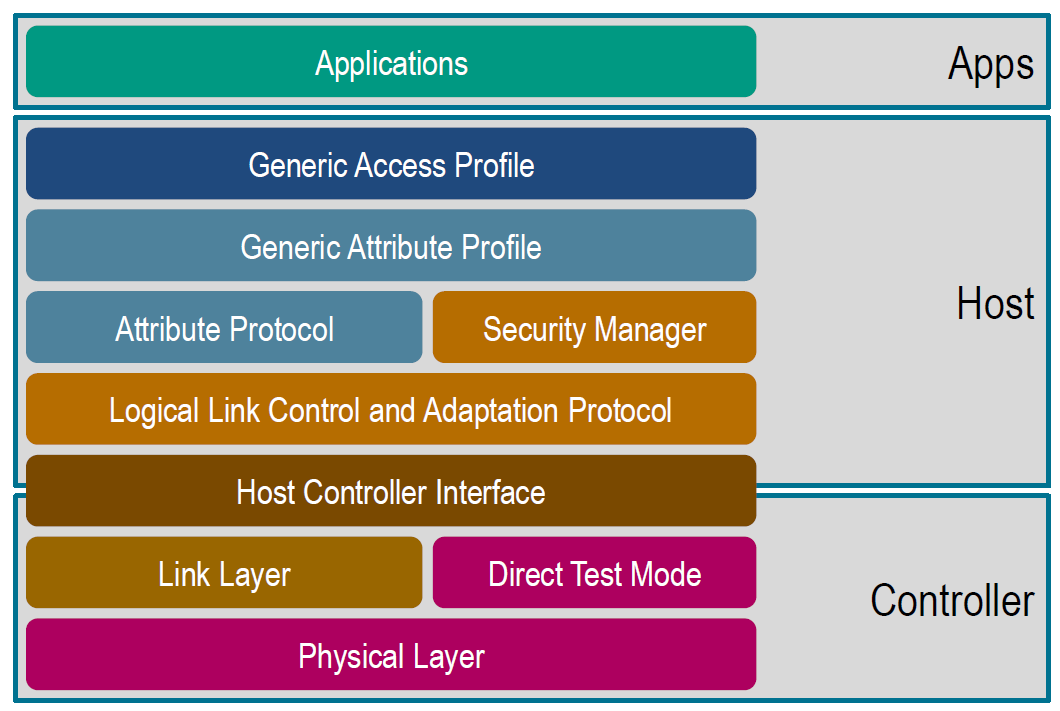4. Introduction
The DA1459x is a family of wireless dual core (ARM Cortex® M33™ + Cortex® M0+™) microcontrollers that
integrate an embedded flash (eFlash) for execution in place (XIP).
The DA1459x SoCs combine :
The Arm Cortex® M33™ application processor with floating point unit (FPU)
Advanced power management functionality
A security accelerator with AES/HASH support
Analog and digital peripherals
Audio HW accelerator
Software configurable protocol engine with a radio, compliant to the Bluetooth® 5.2 Low Energy standard.
More information can be found in the DA1459x Datasheet.
4.1. Guide Purpose
The key goals of this tutorial are to:
Provide a basic understanding of the Advertising Concept.
Explain how to change the advertising contents and connection parameters with respect to the SmartBond™ SDK .
Give a complete sample code, demonstrating Bluetooth advertising functionality.
The following hardware and software elements are required to use the DA1459x DEVKIT-PRO:
The DA14592 Technical Documentation or the DA14594 Technical Documentation and DA1459x SDK.
e²studio 2025-01 (or newer) which can be installed on Windows, Linux or MacOS hosts.
Windows users should download and install terminal software such as RealTerm, Putty or Teraterm. The rest of the document uses RealTerm. Linux users can use Putty.
4.2. Bluetooth Low Energy Protocol

Figure 1 Bluetooth Low Energy Protocol Stack
The Bluetooth Low Energy protocol stack is broadly broken down into three primary components or subsystems. These are the application, host, and controller blocks.
Application: This is software that acts as a man-machine interface by bundling together the entire functionality of Bluetooth LE protocol in a fashion that is accessible to the user.
Host: The host is typically a software stack made up of the topmost layers of the LE stack as well as what are known as profiles. A profile offers details on how each protocol in the stack should communicate with one another and work together for a certain usage model. LE Profiles act as a commander by directing the soldiers (the layers of the protocol stack) in a specific enemy’s direction (specific usage model).
Controller: The controller is a subsystem that consists of the lower layer protocols in the LE stack. The LE controller also consists of a physical radio that can generate and receive radio waves in the 2.4 GHz band, encode the RF signals with data (GFSK modulation) and radiate the signals through an antenna. It should be able to receive RF waves as well as understand how these signals can be interpreted as data packets with information within them.
4.3. Advertising Concept
Bluetooth Low Energy can broadcast small packets of data containing advertisements to peer devices.
An Advertising packet is small and has a well-defined format. As a result, only a restricted amount of user data can be carried.
The Advertising mode also supports transmission of a secondary Scan Response packet which contains additional data. This data can be requested by a potential client using a Scan Request without establishing a permanent connection to the device.
An Advertising packet is made up of a number of fields which typically includes:
The name of the device
Some or all of the services supported by the device
Advertising packets may also contain proprietary manufacturer-specific data and flags declaring the capabilities of the device.
4.4. Advertising with Respect to Bluetooth Low Energy
Bluetooth Low Energy implements two communication methods:
Advertisement: A Bluetooth Low Energy peripheral device broadcasts packets to every device around it. The receiving device can then act on this information without establishing any connection (scan request) or it may also connect to receive further information.
Connected: Communication is setup to receive packets using a physical connection link, where both the peripheral and central devices send packets.
4.5. Advertising Packets

Figure 2 Advertising Data Packet
A packet can be 80 to 376 bits in length, and has the following fields:
Preamble
Used for internal protocol management. Advertising packets have 0xAA as preamble.
Access Address
This is always 0x8E89BED6 for advertising packets.
PDU
There are two PDU formats, one for advertising packets and one for data packets. The Advertising PDU consists of the 16-bit PDU header and, depending on the type of advertising, the device address (6 bytes) and up to 31 bytes of information. If the advertising mode allows it, the active scanner (through Scan Request) may request up to 31 bytes of additional information from the advertiser. This means that a sizeable portion of data can be received from the advertising device even without establishing a connection.